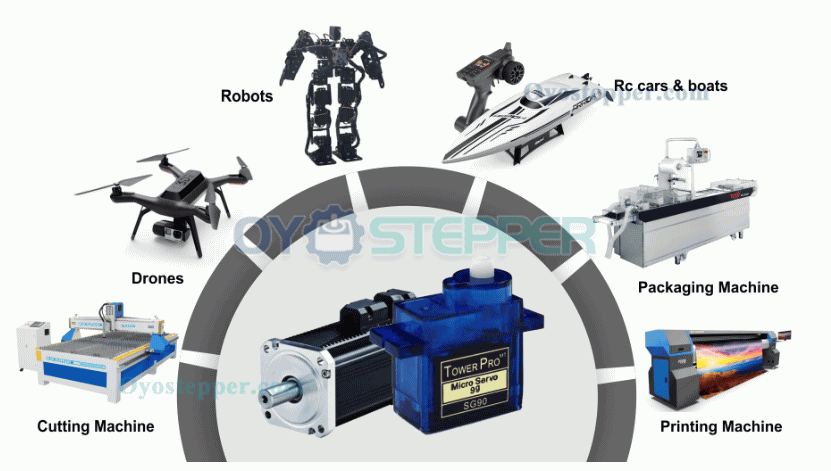The servo motor is an electric motor that allows continuous determination of exact positions, speeds, and torque using control electronics (servo controller). The software interface allows for precise parameterization and programming of the motor's actuation, giving it dynamism as well as individuality.
Although servo motors can be small and powerful, they are essential for
precise positioning control applications. A signal (data), also known as
a pulse width modulator (PWM), controls the servo motor. These are some
of the most common servomotor applications.
Construction of Servo Motor
This motor is a closed-loop mechanism that incorporates positional
feedback in order to control the rotational or linear speed and
position.

This motor is actually an assembly of four things:
Normal DC motor- That is in charge of generating the motion through its shaft.
Gear reduction unit/gear box
Potentiometer
Control circuit;
Advantages of Servo Motor
If a heavy load places on the motor, the driver will increase the
current to the motor coil as it attempts to rotate the motor. Basically,
there is no out-of-step condition.
High-speed operation is possible.
Disadvantages of Servo Motor
Since the motor tries to rotate according to the command pulses, but
lags behind. it is not suitable for precision control of rotation.
Higher cost.
When stopped, the motor’s rotor continues to move back and forth one
pulse. So that, it is not suitable if you need to prevent vibration.
Function in many areas of use
The areas of use cover almost all areas of the manufacturing industry. In particular:
plastics industry
packaging machines
textile processing
printing technology
e-mobility
shipbuilding
energy technology
metalworking
pharmaceutical industry;
What are Servo Motors Used For?
China servo motors
can be used in many different applications. The advantages listed above
means that servo motors are used more and more in industrial
applications to replace conventional AC motors and stepper motors as
well as hydraulic and pneumatic systems. There are many applications
where servo motors have an advantage. Below are just a few examples:

Compared to the stepepr motor ,
servo motor offers great flexibility, precision, and reliability with
high cost efficiency. It can precisely actuate, hold and speed up
positions, torque and speeds in fractions of seconds. This allows
complex machine actions that can be used to implement complicated
production processes. They are also suitable for robotics or automation
solutions. Without servo motors, the world would be very different. They
make our lives easier and provide us with better products, no matter if
they are used in industrial manufacturing, or commercial applications.
See more:
https://www.oyostepper.com/article-1116-The-Advantages-and-Disadvantages-of-Servo-Motor.html
评论
发表评论